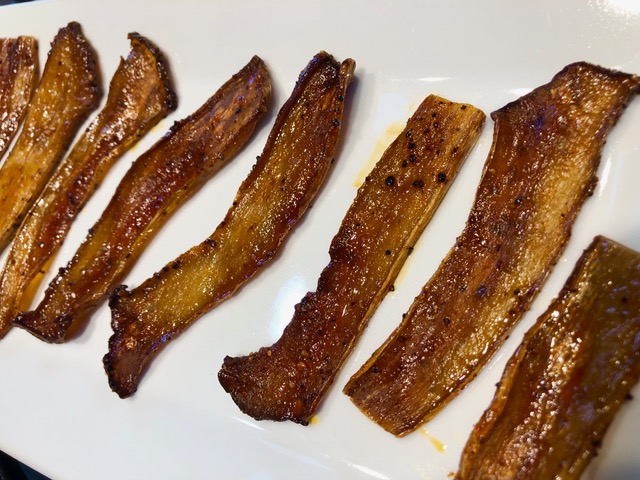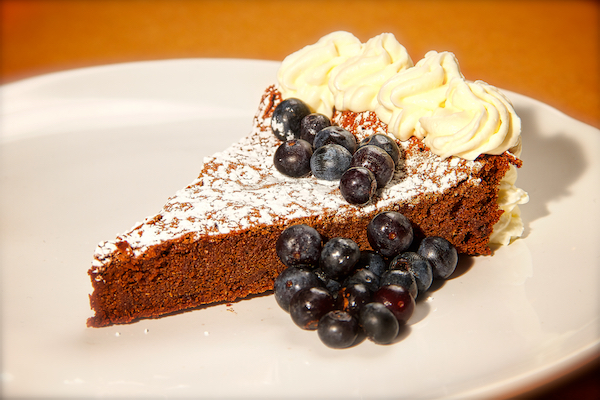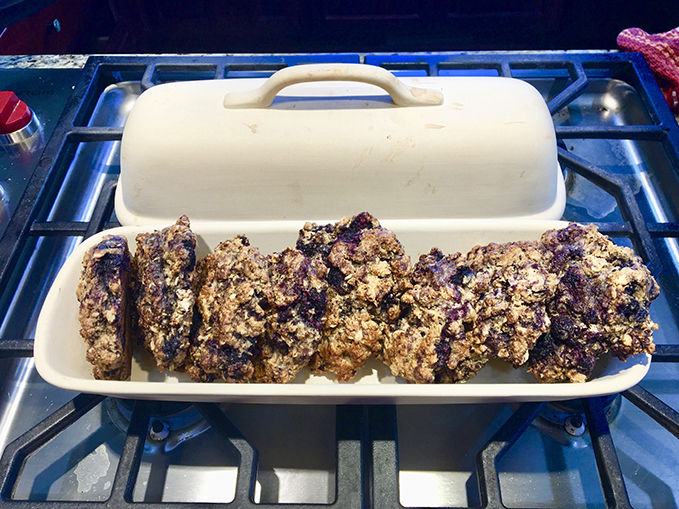By using our website, you agree to the use of cookies as described in our Cookie Policy
Blog
Black Garlic Scape Seasoning is Back in Season(ing)
Organic garlic scapes and lobster have something in common. About one hundred years ago, lobster was purportedly so abundant and non-mainstream they were used primarily for fertilizer or feeding prisoners. How times have changed.
We all know the popularity and price of lobster these days, but did you know almost 7 of 10 lobsters are paper or soft-shell lobsters, which still is a much harder sell at the market? So much so that a group in New England are promoting it as a different product altogether in an attempt to sell this majority harvest that presently has a very wasteful track record.
Garlic scapes, on the other hand, until very recently have mostly been left to flower or cut and left in the field. Why cut this bulbil from the plant in the first place? Well, contemporary thought and science suggest that by snipping this double-helix, pencil thin reseeding growth from hard neck garlic, a transfer of energy occurs down to the bulb, promotes growth and finishing of the usable and marketable product. Typical supermarket garlic is of the soft neck variety, where no scape forms.
Scapes too have enjoyed a surge in popularity, and deservedly so. If you've never enjoyed them, they have the brightest garlic flavor of all and a smack of peppery punch. In the culinary world, this is a valuable flavor component to work with in the late spring/early summer. What keeps scapes viable and maybe popular is the resurgence of attention to health, farm-to-table and organic products to feed humans versus factory trash "food". That's good news all the way around, except for farmers.
Scapes are in no way profitable for most garlic farmers. It's more of a sharing the goodness thing than a crop. It provides a prelude of what is coming when the real deal happens- garlic bulb harvest. Typically, harvest is ready about 3 weeks after most scapes are taken. Those that suggest that this is a true double-crop simply don't understand the labor or mechanics to distribute quality scapes to the marketplace. It's more of a responsibility thing to the plant and crop. As an organic grower and foodie, I'm absolutely cool with that.
So what to do with scapes? It somewhat reminds me of Bubba Gump's Shrimp as there is scape pesto, grilled scapes, scape salad, pickled scapes, scape frittata....you get the idea, the list goes on and on. The real question is the juice really worth the squeeze? I for one thing so.
Our development of organic (mostly black) garlic products leaves an indelible stamp on my forehead and brain. Perhaps the real question is: What affinities does this natural product possess and how can we experiment and maybe find a worthy combination of best available ingredients to share with family, friends and customers? As an up-front disclaimer, I really don't care if you or anyone else buys our Black Garlic Scape Seasoning or not. Please don't misunderstand, we do need sales to continue our work. However, something incredible happened two years ago- customers really liked it, especially on fish, chicken and veg. Further, some of them became pretty pissed when we didn't/couldn't make it last year.
We just finished a limited batch of 200 tins of this seasoning, because it was the right thing to do. It's rather straightforward and includes three hand ground grains of USA dehydrated ocean water (sea salt), smoked and dehydrated scapes and some appropriate local spices for balance.
The coolest part is what's next. Appropriately, I'm committed to make homemade pasta with soft shell lobster, scape pesto and Black Garlic Scape Seasoning, simply to marry this two very diverse ingredients into a dish because after all, they really do have something in common.......history. Promise to post pics here if/when I pull it off.
"Sharing the Goodness"
Patrick W. Lloyd, Ph.D, Founder






